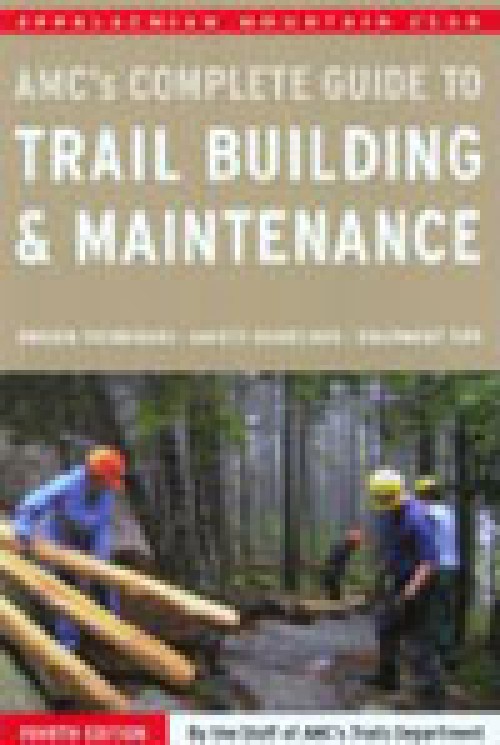by By the Staff of AMC’s Trails Department
I started hiking in the late 1940s and early 1950s when owning a customized pair of leather boots made by Peter Limmer was every hiker’s ultimate goal. Owners exhibited their creativity by personalizing the patterns of the hobnails they hammered into the leather soles. We didn’t realize it then, but these hobnails scratched every rock and scarified the soil.
Back then, many trails were the shortest distance between two points, and on steep slopes, some of these trails were knee-deep trenches from erosion. It was in 1973, while I was hiking the northern third of the Appalachian Trail, that I first noticed improvements in trail layout and maintenance.
What a long way we have come. This fourth edition of the AMC’s Complete Guide to Trail Building & Maintenance by the staff of the Appalachian Mountain Club’s trails department is encyclopedic as it covers in detail almost everything a trail builder or maintainer needs to know.
The guide emphasizes the control of water. In the real estate mantra, the three most important words are “location, location, location.” In laying out and maintaining trails and woods roads, the mantra is “water, water, water.” Volume and velocity need to be constant considerations. The best way to see how water and soil are moving is to get out in a heavy rainstorm or immediately thereafter.
Though the Guide gets the big things right, I do have some nit-picking:
I take exception to the Guide’s description of logging as “an incompatible use” and the subsequent recommendation to buffer the trail from logging activities. I submit that signs discussing the myriad uses of wood products in our lives, the need for early successional forests for diversity of wildlife habitat, and the important role of the forest-products industry in the rural economy would be educational to an increasingly urbanized society.
Also, the Guide’s advice to “turn off your saw when moving between cuts” is out of date and impractical if you want to get much work done. The invention of the chain break allows you to safely stop the chain from moving between cuts with a quick snap of the wrist.
On pruning, they say, “Limbs or branches should not be cut flush…Leave a small amount of stem…” This also outdated piece of advice could lead people to leave stubs, which can help spread decay organisms. The proper technique for limbing is to cut just outside the branch collar, the swelling where branch meets trunk.
Still, this is a very useful book for trail builders and maintainers. And it’s not just for hiking trails, either, as the section on ski trails is very detailed and complete.
The authors make two very important points: over the years, wear and tear is going to cause erosion; it’s crucial, therefore, to consider who is going to be responsible for maintenance after the trail is built.


